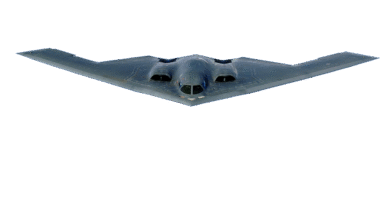In the realm of extraordinary claims and tantalizing mysteries, few stories captivate the imagination like that of the “Black Knight” satellite. It’s a saga that seamlessly intertwines alien intrigue, secret societies, and otherworldly technology. The narrative’s web is so intricate that it’s no wonder people continue to find themselves ensnared by its enigmatic allure.

An artist’s impression of the purported Black Knight satellite, the focus of a long-lived conspiracy theory. (Image credit: Future/Adrian Mann)(Image credit: NASA)
The tale, like many enduring conspiracies, is an intricate tapestry woven from disparate threads. It first leapt into the public consciousness in 2017 when Mail Online published a story claiming that an ancient alien satellite, established over 12,000 years ago by extraterrestrial beings, had been taken down by elite soldiers from the secretive Illuminati. This sensational revelation thrust the Black Knight satellite back into the spotlight, sparking fervent debates and heated discussions in the realm of conspiracy enthusiasts.

A photo snapped by an astronaut during the space shuttle mission STS-88 in 1998 that conspiracists claim shows the “Black Knight.” (Image credit: NASA)
Although it may seem like a modern-day revelation, the origins of the Black Knight legend stretch back more than a century. Proponents of the theory assert that a mysterious spacecraft of extraterrestrial origin has been lurking in near-polar orbit around Earth for over 120 years. This cosmic sentinel, they claim, is engaged in clandestine activities that defy human comprehension.
One of the earliest pieces of “evidence” linked to the Black Knight satellite is a series of radio signals detected as far back as 1899 by the brilliant Nikola Tesla. While working in his laboratory in Colorado Springs, Tesla recorded peculiar signals that he believed might be originating from an intelligent extraterrestrial civilization. Despite more plausible explanations emerging over the years, some believers still cling to the notion that Tesla was the first to intercept communications from the enigmatic satellite.
However, a pivotal moment arrived in 1998 during the STS-88 space shuttle mission to the International Space Station (ISS). NASA released images that appeared to show a mysterious black object hovering above Earth. Conspiracy theorists seized upon this as definitive proof of the Black Knight satellite’s existence. But closer inspection revealed a more mundane truth: the object in question was a thermal blanket that had accidentally drifted into space during a spacewalk, a far cry from an otherworldly sentinel.

The “Black Knight” is actually debris left over from a spacewalk during the first space shuttle mission to the International Space Station in 1998. (Image credit: Future/Adrian Mann)
James Oberg, a former NASA engineer, dissected the images and provided a rational explanation. He pointed out that the object was a lost thermal cover from the space shuttle Endeavour. The cover had come loose during a spacewalk and eventually burned up upon re-entry into Earth’s atmosphere.
Despite such thorough debunking, the Black Knight legend endured, fueled by the relentless quest for extraterrestrial mysteries. Even Tesla’s experiments, which were most likely unrelated to alien communications, have been folded into the narrative, demonstrating the capacity of conspiratorial thinking to retroactively incorporate even the most mundane of occurrences.
The allure of the Black Knight satellite lies in its ability to transcend logical explanations and tap into our fascination with the unknown. While the prevailing evidence points to the contrary, the theory continues to resonate, serving as a reminder of the enduring power of myth and the boundless imagination of those who seek to uncover the hidden truths of the universe.
In a world where secrets and mysteries still beckon, the Black Knight satellite remains a shining enigma, challenging us to delve deeper into the cosmos in search of answers that may forever elude our grasp.
Source: space.com





Your article helped me a lot, is there any more related content? Thanks!
Your article helped me a lot, is there any more related content? Thanks!